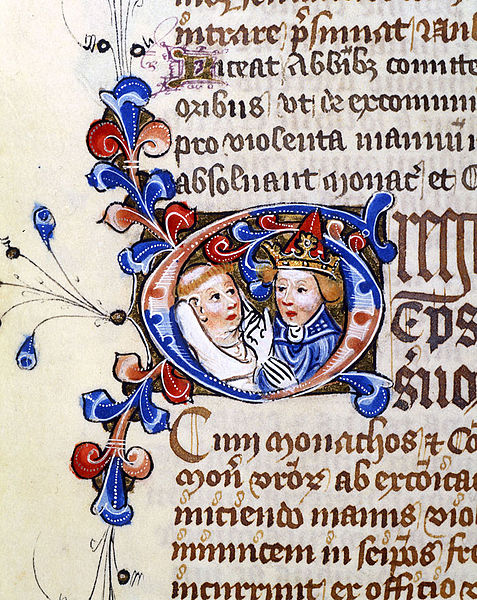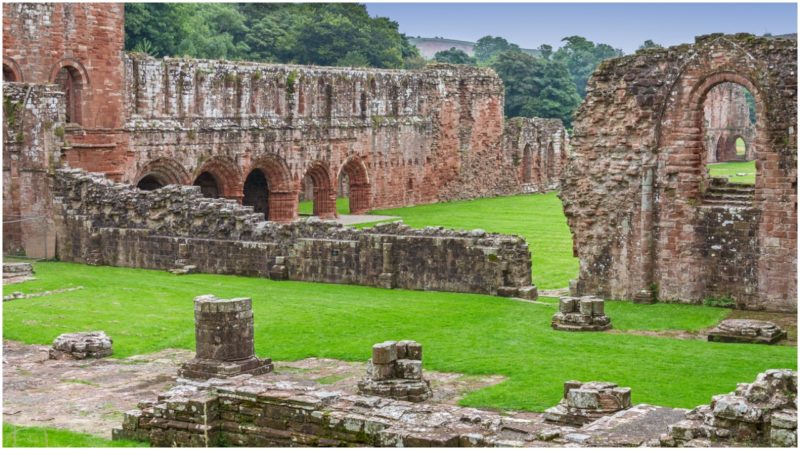Completely abandoned and in ruins lies the monastery of St. Mary of Furness on the borders of Barrow, a magnificent medieval town in the county of Cumbria in Northwestern England. The roots of this place run deep into history and can be traced all the way back to the 12th century, to the year 1123.

Stephen, Count of Boulogne and once-powerful King of England, founded the monastery in the lowlands of Nightshade, to the south of Dalton-in-Furness. The monastery was built for the Congregation of Savigny using nothing but a local sandstone.

Years later in 1147, the monastery was given to the Cistercian Order who further extended it and rebuilt the old church. But it took another couple of years for this monastery to grow and become one of the most important and richest among the Cistercian Abbeys. Only Fountains Abbey was more extravagant than Furness Abbey.

It was built employing the gothic style of architecture with numerous adjacent extensions of it straddled across a vast area. The monks themselves were the landlords, which made them powerful and important. Many prominent people were buried in the Abbey, such as kings and bishops.

Truth be told, the monks owned so much land that even Rushen Abbey was built on their property and a couple of mines were under direct control of the monastery. Their influence went so far as to prompt the construction of Piel Castle so that they could have control over the trade route and goods passing between the Isle of Man and the Furness Peninsula.
The monks even paid a large sum to Robert the Bruce to spare the monastery and great wealth they undoubtedly were in possession of. And so when Robert the Bruce attacked England he left the monastery unharmed.

The end of these influential monks came during the 16th century in 1537 with the English Reformation and Henry VIII. The Reformation changed Christianity in Europe forever and led to the destruction of this monastery.
Today, this magnificent abbey has been reduced to rubble and ruin, but the craftsmanship that went into its construction and upkeep during its heyday is still clearly visible.

It remains a favorite tourist destination and attraction that includes important visitors such as the family of Theodore Roosevelt. At the time of their visit in 1869, Theodore was a small boy exploring the ruins of the abandoned monastery. It is also listed as a Grade I building and several renovations on some of the structures were carried out in fear that they would collapse. The restoration project lasted for nine years.

Despite being a tourist attraction, this monastery is associated with stories of numerous supernatural activities and sightings from a number of visitors. Their stories vary in both length and theme but some of them have certain common themes, such as the story about a ghostly monk that was spotted by visitors as he walked facing the gatehouse and then suddenly disappeared.

The other story is about a girl still waiting for her beloved who one day set out on a sea journey and never returned. Until her death, this girl walked up and down the abbey waiting for him to return and her spirit is said to still walk the path to this day, which bears the name My Lady’s Walk.

The third sighting is another female ghost, the White Lady, which is fairly similar to the previous story. The most famous and disturbing of all the apparitions is the headless ghost of a monk who rides a horse past the Abbey Tavern.
The rest of the stories are about the tunnel that runs all the way from Piel Castle and countless stories about the Holy Grail, whose hidden location is rumored to be this very monastery. Even in its state of ruin, this place continues to be an important and influential part of human history.
